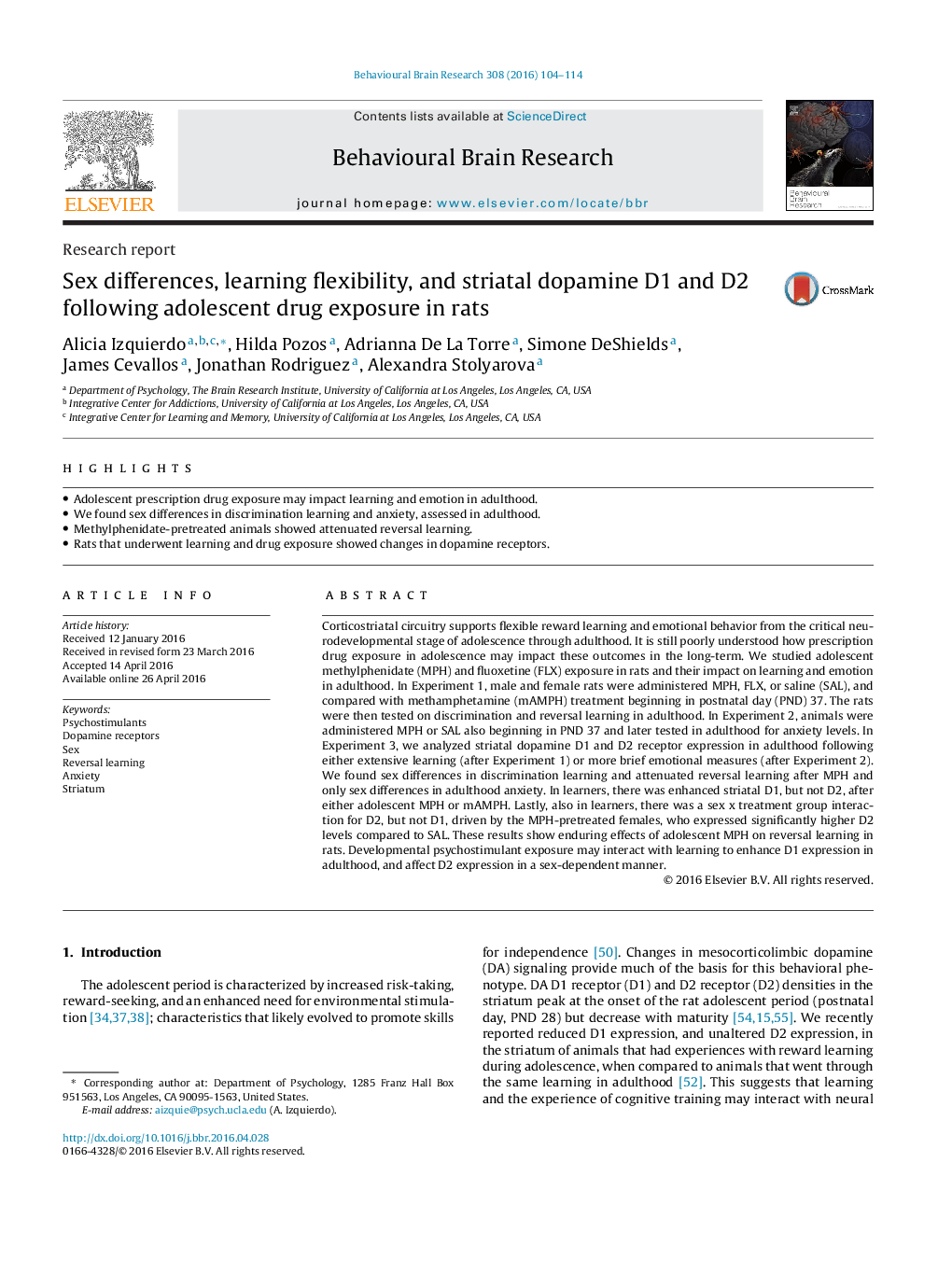| Article ID | Journal | Published Year | Pages | File Type |
|---|---|---|---|---|
| 6256015 | Behavioural Brain Research | 2016 | 11 Pages |
â¢Adolescent prescription drug exposure may impact learning and emotion in adulthood.â¢We found sex differences in discrimination learning and anxiety, assessed in adulthood.â¢Methylphenidate-pretreated animals showed attenuated reversal learning.â¢Rats that underwent learning and drug exposure showed changes in dopamine receptors.
Corticostriatal circuitry supports flexible reward learning and emotional behavior from the critical neurodevelopmental stage of adolescence through adulthood. It is still poorly understood how prescription drug exposure in adolescence may impact these outcomes in the long-term. We studied adolescent methylphenidate (MPH) and fluoxetine (FLX) exposure in rats and their impact on learning and emotion in adulthood. In Experiment 1, male and female rats were administered MPH, FLX, or saline (SAL), and compared with methamphetamine (mAMPH) treatment beginning in postnatal day (PND) 37. The rats were then tested on discrimination and reversal learning in adulthood. In Experiment 2, animals were administered MPH or SAL also beginning in PND 37 and later tested in adulthood for anxiety levels. In Experiment 3, we analyzed striatal dopamine D1 and D2 receptor expression in adulthood following either extensive learning (after Experiment 1) or more brief emotional measures (after Experiment 2). We found sex differences in discrimination learning and attenuated reversal learning after MPH and only sex differences in adulthood anxiety. In learners, there was enhanced striatal D1, but not D2, after either adolescent MPH or mAMPH. Lastly, also in learners, there was a sex x treatment group interaction for D2, but not D1, driven by the MPH-pretreated females, who expressed significantly higher D2 levels compared to SAL. These results show enduring effects of adolescent MPH on reversal learning in rats. Developmental psychostimulant exposure may interact with learning to enhance D1 expression in adulthood, and affect D2 expression in a sex-dependent manner.
